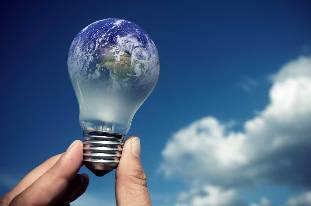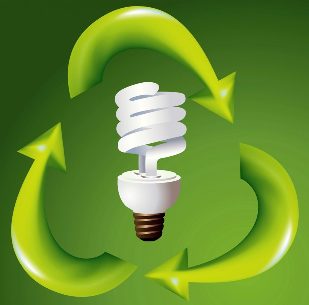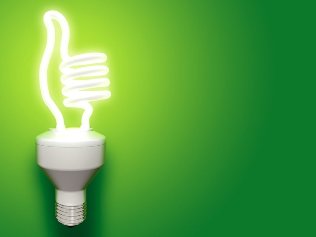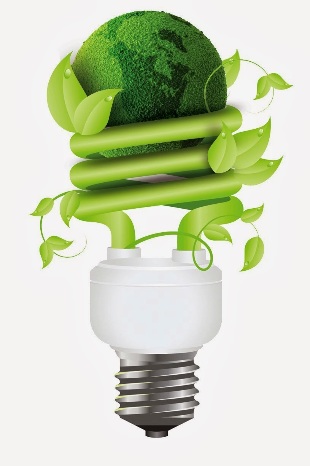The article details a list of all the standard organizational measures to conserve electricity.
Organisational energy saving measures
- The appointment of the person responsible for the provision of energy efficiency measures
- Training in the field of energy saving and energy efficiency increase of the personnel responsible for the provision of energy efficiency measures
- Monetary incentives for energy savings
- Improving facility operation and optimization of lighting systems, ventilation, water supply
- The introduction of schedules to enable and disable the lighting systems, ventilation, heat shields etc.
- Rationing of energy consumption
- Appointment of persons responsible for control on and off systems
- Organization of work for the operation of lamps, cleaning
- Carrying out explanatory work with students and staff on energy conservation
- Campaigning for energy saving
- The development and introduction of system of encouragement of employees for actions aimed at energy saving
- Increasing the technical knowledge in matters of energy savings for certain categories of staff
- The establishment of a management system

The model technical energy saving measures
Power system
- Installation of load break switches in front of the inputs of power transformers
- Elimination of defects of switching and power equipment
- Replacement of high voltage oil switches with vacuum
- Replacement of obsolete transformers for modern
- The decrease of electric power losses in cable networks
- Reduction of energy losses by improving power factor
- The increase in usage of electric devices and transformer substations and to limit their idling
- Maintaining nominal voltage levels in the networks
- Uniform load distribution on phases
- Vehicle systems power supply systems monitoring electrical energy consumption
- The reduction in the number of personal appliances (boilers, coffee makers, kettles, etc.).
- The optimisation of the use of office equipment
- The frequency regulation of pumps of systems of water supply
- The introduction of energy-saving burners on the kitchen electric ovens
- Installation of thermostats on electric heating system
Lighting system
- Reducing energy consumption for lighting purposes by means of reconstruction of existing lighting systems by installing energy-efficient light sources
- The reduction of the scope of luminaires with incandescent lamps and replace them with lamps with fluorescent lamps
- Replacement of fluorescent lamps modification of the old lamps and the new generation of lower power
- Replacement of traditional lighting systems to led
- Replace the electromagnetic control devices from fluorescent lights to more reliable and economical electronic
- The color of the walls in a lighter tone
- Decentralization the inclusion of lighting through the installation of several switches and divide the area coverage of the necessary areas
Heating system

- Preparation of manuals for operation, management and maintenance of heating systems, periodic monitoring by the management agencies for their implementation
- The equipment of heating systems with metering devices
- Hydraulic adjustment of the internal heating system
- Annual chemical cleaning of internal heating surfaces of the heating system and heat exchangers
- Automation of heat supply systems through installation of individual heat points (ITP) with the regulation of the flow of heat
- The removal of decorative fences from the radiators
- Install reflectors behind the radiators
- Install shut-off thermostatic valves on the radiators
- Replace one-pipe heating system two pipe
- The installation of thermal curtains
Hot water system
- Preparation of manuals for operation, management and maintenance systems, periodic monitoring by the management agencies for their implementation
- Automation control system GVS
- Ensuring recirculation of water in the tank
- Consumption reduction through optimization of expenses and regulation of temperature
- Equipment systems counters of hot water consumption
- Reduction of heat losses during transportation of the pipe through the insulation
- Introduction of insulation pipe based on ultra-thin insulating coating
- The use of economic dismountable fittings
- Reduce costs and water losses
Water consumption
- Replacement of worn out steel pipelines of water supply
- The introduction of water recycling systems
- The introduction of water treatment systems
- The use of economic dismountable fittings
- Reduce costs and water losses
Heat recovery
- The introduction of heat recovery in building
- Energy efficiency dryers
Ventilation system
- Optimization of ventilation systems
- Shutdown of ventilation systems during lunch breaks and after hours
- Use of blocking the fan air curtains with mechanisms for opening doors
- Replacing outdated fans with low efficiency in modern higher efficiency
- Replacement of outdated drives for ventilation systems with low efficiency in modern higher efficiency
- The frequency regulation of rotation speed
- The use of devices for automatic regulation and control of ventilation units based on outside air temperature (including use of VFD)
Air-conditioning system
- The air conditioning only when necessary
- The exception of the overheating and overcooling of the indoor air
- The maintenance of regulators, surfaces of heat exchangers and equipment

Pumping unit
- Modernization of pumping units
- Modernization of the electric pump
- Stabilization of the pressure in hydraulic systems
Compressed air system
- The introduction of an automated process control system of production of compressed air
- Decentralized air supply
- Introduction of system of drying compressed air compressor station
- Modernization of compressor refrigerating machines
Electrical equipment
- Implementation of welding inverters with microprocessor control circuits
- Minimization of power loss in welding machines upon breakdown of the arc
- Modernization of rectifier assemblies of the galvanic area
- The introduction of the systems high-temperature heating of the charge
Construction and building envelope
- The reduction of thermal heat loss through the window openings by installing a third glass or PVC film between frames in the space of the Windows
- Reduction in heat loss through the window openings by installing economic reflective film on window glass
- Additional cellular polycarbonate glazing
- Improving thermal insulation of facades, ceilings, walls, floors and attics, roofs, etc.
- Reduce the heat loss by heat sealing the expansion joints between the panels of houses
- The hydrophobization of walls (hydrophobic coating of the walls)
Boiler and thermal power plant
- Preparation of manuals and regime cards of operation, management and maintenance of equipment and periodic monitoring by the management agencies for their implementation
- To maintain an optimal coefficient of excess air and good mixing the fuel
- Installation of a water economizer surface per boiler
- Application for heating generators deep heat utilization systems using the latent heat of vaporization of exhaust flue gases (contact heat exchanger)
- The increase in temperature of feed water at the entrance to the boiler drum
- Preheating the feed water to water heat exchanger
- To clean the outer and inner heating surfaces of the boiler
- The descaling of the internal heating surfaces of boilers by ultrasonic method
- The use of heat emissions from the boilers by means of a fence of warm air from the upper zone of the boiler room and feeding it into the suction line of the fan falls
- Insulation of external and internal surfaces of boilers and heat pipes, the valve seal and tract boilers (temperature on the surface of the lining shall not exceed 55 degrees C)
- Installation of accounting systems, costs of fuel, power, water and heat
- Automation management boiler room
- Application of frequency drive for speed control of pumps, fans and snails
- The transfer of steam boilers in hot water mode
- Translation of a steam heating system in a water
- Rational download of the simultaneously working of boilers
- The installation of the cogeneration unit (CHP)
- Installation of condensate return
- Install continuous blowdown expander and raw water heater
- Recovery boiler setting boilers
Vehicle
- The transfer of a vehicle from petrol to gas
- Maintaining uniform air pressure in the tires
Energy accounting

- Implementation of automated information-measuring systems (aims) accounting of heat and electricity
- Modernization and expansion of the system of technological information exchange
- The establishment of a centre for the collection and processing of data
The energy saving at the enterprise is one of the most pressing problems facing the industry. This is due to the constant rising cost of electricity and other energy sources. Production spend their finances on raw materials, fuel, maintenance, but most expensive is to pay for the energy component.
Energy saving measures that you will spend in your enterprise will allow you to significantly reduce the cost of energy and thereby have a positive impact on technical and economic indicators of work of the enterprise or production. It is immediately observed to increase profitability and improve competitiveness of products by reducing the cost of production or services.
























